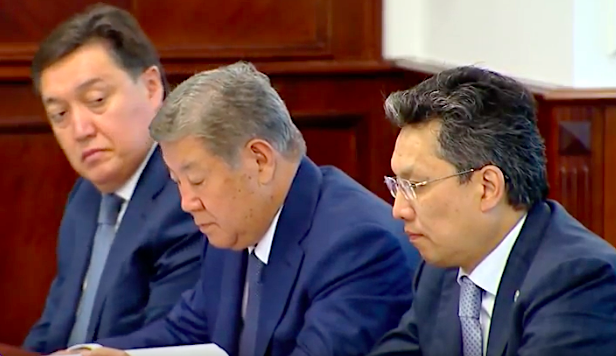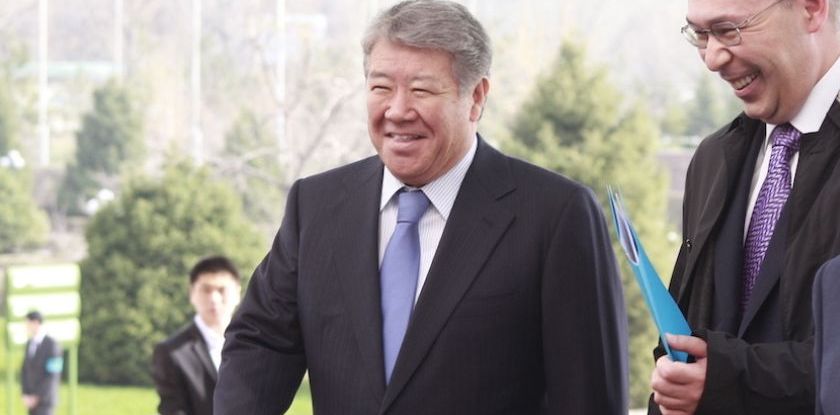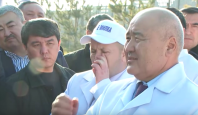Having tested the big business’ rescuing (and, simultaneously, redistributing) mechanism on the banking sector, the Kazakh ruling elite led by President Nazarbayev will now use it in the other fields. It seems the agroholdings are to become its next victim.
On March 6, 2019, Prime Minister of the Republic of Kazakhstan Askar Mamin held the State Commission session devoted to the matters of the economy modernization. At the session, they reviewed the proposal made by the Ministry of Agriculture on recovering the distressed agroholdings’ assets.
The Governors of the Akmola, North-Kazakhstan, Kostanay and Aktobe regions (Malik Murzalin, Kumar Aksakalov, Arkhimed Mukhambetov and Ondasyn Urazalin, respectively) participated in the session via video-conference communication. At the end of the session, “a draft of the roadmap for the collective efforts regarding the problem agroholdings on the part of Holding KazAgro JSC, Problem Loans Fund JSC and a number of the regional Governor Officers” was approved.
Unfortunately, the text of the draft has not yet been published on the Ministry of Agriculture’s website. It is possible that it will be deemed “classified” and not made public at all. The reasons for this concern lie in the fact that all the agroholdings (without exception) belong to the country’s very influential people that usually hold key positions in Akorda and the government or used to serve as regional governors.
In our opinion formed on the basis of the banks’ rescuing practices, Akorda will be saving not so much agriculture as the sector (since it does not have enough strength, money, instruments to do so) as the big businesses and perhaps their individual owners. So, some companies may (fully or partially) change their owner. The latter, most likely, will come from Nursultan Nazarbayev’s immediate circle.
For Kazakhstan, there can be no other scenario. The ruling elite led by Nursultan Nazarbayev, having tested the big business’ rescuing (and, simultaneously, redistributing) mechanism on the banking sector, is likely to use it in the other fields. And the fact that it is agriculture that is to become its next victim follows quite logically from the political, economic and social standpoints.
Unfortunately, in the state with the authoritarian political system and the super-presidential vertical where the national economy is based on exploiting the natural resources and the subsequent division of the rent, the latter is always distributed from the top to the bottom. With that, the biggest part of the rent is received (expropriated) by the ruling elite and, within it, those who have privatized the state power, in other words, the President and his immediate circle have the upper hand.
In theory, the part of the population receiving this rent may grow. Moreover, this is already happening thanks to the three blocks of the Presidential decisions on increasing the social support of the Kazakh citizens. However, the biggest part of the rent continues to be taken away by the Kazakh elite and the major foreign investors who, in their turn, provide the political “cover” for the authoritarian regime and Nursultan Nazarbayev in Washington and the European capitals.

Judging by the fact that the Roadmap includes Holding KazAgro and the Problem Loans Fund, the scheme tested on the banking system is likely to be repeated.
In other words, the Problem Loans Fund will receive huge state resources (measured by trillions of tenge) including those of the National Fund of the Republic of Kazakhstan and exchange them for the agroholdings’ non-performing loans including those of the infamous Ivolga (the President’s nephew Akhmetzhan Esimov is thought to be its unofficial owner).
Such operations will result in the state’s direct losses that will be hidden on the PLF’s balance sheets. This is especially likely since the fate of this agency as a “garbage can” is already predetermined. At the same time, Holding KazAgro will, quite possibly, assume the role of the sector’s rescuer and, simultaneously, of the main instrument for pumping the money into the structures that Akorda deems as “survival worthy”.





